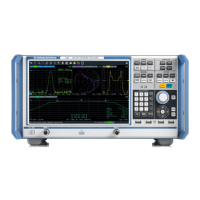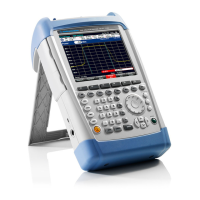Performing Configuration Tasks
R&S
®
SGS100A
147User Manual 1173.9105.02 ─ 12
9 Performing Configuration Tasks
This section provides a general explanation on how to operate the instrument manually
via the R&S SGMA-GUI software.
We assume, that the R&S SGS is connected to a remote PC. The R&S SGMA-GUI
software has to be installed on this remote PC and the instrument has to be added to
the list of "Available Instruments".
For information on how to fulfill these requirements, refer to:
●
Chapter 2.3.2.1, "Connecting the Instrument to the Network", on page 25
●
Chapter 2.3.1, "Installing the R&S SGMA-GUI Software", on page 23
●
Chapter 2.3.2.3, "Automatically Adding Instruments to the SGMA-GUI ",
on page 27
General workflow
The general workflow for generating a signal with the R&S SGS comprises the follow-
ing main steps:
1. Decide whether you want to generate a CW or an I/Q modulated signal.
See Chapter 9.1, "How to Generate an I/Q Modulated Signal", on page 147.
2. Select the operating mode.
See Chapter 9.3, "How to Enable a Baseband Bypass Mode", on page 151.
3. Configure the reference and local oscillator settings.
See Chapter 9.4, "How to Configure the Reference Oscillator Source",
on page 152 and Chapter 9.5, "How to Configure the Local Oscillator (LO) Cou-
pling Source", on page 153.
4. Adjust the frequency, level and I/Q settings, for example, to optimize performance
or to add impairments to the generated signal (see Chapter 9.11, "How to Optimize
Performance", on page 158).
9.1 How to Generate an I/Q Modulated Signal
The instrument is manually operated via the R&S SGMA-GUI software.
The I/Q Modulator requires the hardware option R&S SGS-B106V and for operation up
to 12.75 GHz also the hardware option R&S SGS-B112V.
An example of how to configure the instrument to generate a continuous wave (CW)
signal is provided in Chapter 4, "First Steps with the Instrument", on page 36.
How to Generate an I/Q Modulated Signal

